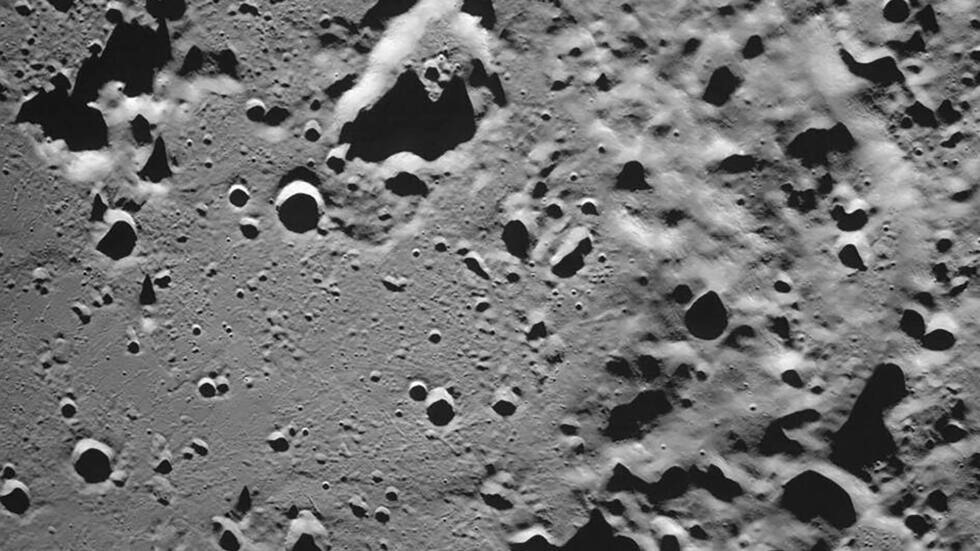Russia’s first moon mission in 47 years failed when its Luna-25 spacecraft spiralled out of control and crashed into the moon due to a glitch that occurred while preparing for pre-landing orbit.
As per Russia’s state space corporation, Roscosmos, the announcement comes a day after the spacecraft reported an “emergency situation” while attempting to enter a pre-landing orbit.
Luna-25 Crashes
According to Roscosmos officials, the Luna-25 lander crashed into the moon on Saturday after an orbital manoeuvre went wrong. “At about 14:57 Moscow time (on 19 August), communication with the Luna-25 spacecraft was interrupted,” Roscosmos announced on Telegram.
The space agency reported, “The measures taken on August 19 and 20 to search for the device and get into contact with it did not yield any results.” Luna-25 “switched to an off-design orbit” before the collision, based on “preliminary analysis,” the agency reported. “The apparatus moved into an unpredictable orbit and ceased to exist as a result of a collision with the surface of the Moon.”
Providing further details on what happened, the space agency stated, “Thrust was released to transfer the probe onto the pre-landing orbit. During the operation, an emergency situation occurred on board the automatic station, which did not allow the carrying out of the manoeuvre within the specified conditions.”
Russia's Luna-25 crashes into Moon's surface day before its planned touchdown#Russia #Moon #lunar25 #Luna25Crashedhttps://t.co/NJIcmnz2Qv
— ET NOW (@ETNOWlive) August 20, 2023
Roscosmos officials have already organised a team to examine the Luna-25 crash. “A specially formed interdepartmental commission will deal with the issues of clarifying the reasons for the loss of the moon (lander),” the agency stated on Telegram.
Natan Eismont, a senior scientist at the Russian Academy of Sciences’ Space Research Institute, which supervised the scientific operations of Luna-25, informed media sources that the spacecraft’s engine did not function as expected during burns to adjust the spacecraft’s direction.
Luna-25, the country’s first moon lander in 47 years, was launched on 11 August to achieve the first mission to reach the moon’s south pole zone, ahead of the Indian Space Research Organisation’s (ISRO) Chandrayaan-3, which is scheduled to land on the lunar surface on 23 August.
India’s Moon Landing
With the crash of Luna-25, the focus is now on ISRO’s Chandrayaan-3, which is on track to become the first spacecraft to land near the lunar south pole.
The Chandrayaan-3, which includes a lander, propulsion module, and rover, aims to safely land near the moon’s southern pole, collect data, and conduct scientific experiments to understand its composition.
Chandrayaan-3 Mission:
— ISRO (@isro) August 19, 2023
The second and final deboosting operation has successfully reduced the LM orbit to 25 km x 134 km.
The module would undergo internal checks and await the sun-rise at the designated landing site.
The powered descent is expected to commence on August… pic.twitter.com/7ygrlW8GQ5
On Sunday, ISRO confirmed that the landing would most likely occur on Wednesday (23 August), saying Chandrayaan-3 was operating smoothly and preparing for its scheduled descent at the start of the lunar day, which lasts around 14 days on Earth.
The Indian space agency also announced that the Chandrayaan-3 performed its first deboosting operation on Friday and completed its final deboosting operation on Sunday.
Importance of the Lunar South Pole
Scientists are particularly interested in the moon’s lunar south pole as they believe the consistently shadowed polar craters might contain water. The lunar south pole contains distinct craters as sunlight cannot reach their interiors.
According to studies, these craters are cold traps that have retained a fossil record of early solar system hydrogen, water ice, and other volatiles. Explorers in the future may be able to turn the frozen water in the rocks into air and rocket fuel.

